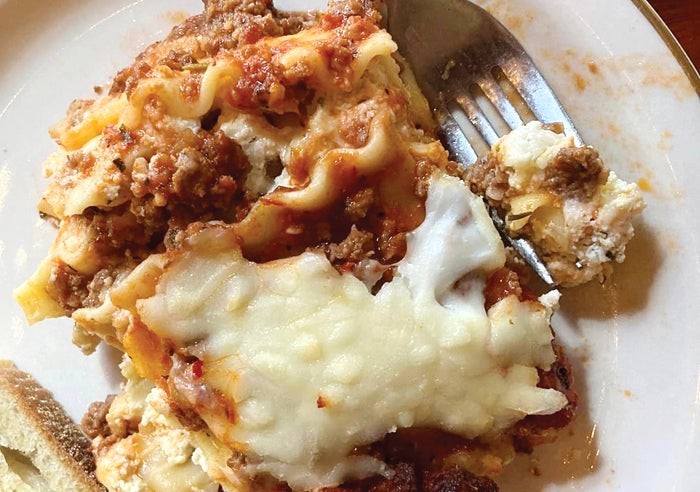Toi Degree: Be good to your turkey
Published 12:00 am Tuesday, November 10, 2015

- Illustration by Mark Brincefield/For the Salisbury Post Preparing your turkey for the Thanksgiving feast takes some special care. Watch out for the best price and thaw frozen birds safely.
By Toi Degree
Rowan Cooperative Extension
Recently, while looking at the supermarket fliers of upcoming sale items, one thing was very evident — Thanksgiving is just around the corner.
If you are like me, you are making mental and physical notes of the items you need for the big family dinner. Most of those meals will include turkey, so I would like to provide you with vital information about buying your holiday turkey.
I am sure that you all are aware of the avian influenza outbreak which resulted in the loss of more than 48 million chickens and turkeys. This outbreak has caused a climb in egg prices, which are higher than previously expected this year and will remain high through 2016, according to estimates from the U.S. Department of Agriculture (USDA).
Additionally, frozen wholesale turkey prices are expected to be up to 19 percent higher for the key Thanksgiving holiday than they were a year ago. The USDA, in a monthly supply and demand report on Aug. 12, raised its estimate for wholesale frozen turkey prices in the fourth quarter to range from $1.28 to $1.36 per pound, up from an average of about $1.14 a year earlier.
Grocers often discount turkeys during the holidays to drive traffic in stores. However, rising wholesale prices could still sting shoppers. “Some chains might not discount them quite as heavily,” USDA agricultural economist Dave Harvey said.
So I would encourage you to buy your Thanksgiving turkeys as soon as you see them advertised in store fliers or as soon as you see them in the store, whichever comes first.
Of course, if you don’t want to go through the hassle, you might just choose not to have turkey for your dinner. Many people have gotten away from the traditional turkey, instead choosing to have chicken, beef, pork, duck, fish or lamb as the main meat.
What’s most important is that you have a wonderful Thanksgiving meal with your family. Always remember to thaw your turkey correctly using either of these recommended methods ONLY:
Refrigerator — keep the turkey in its original wrapper; place the whole bird in a tray in the bottom section of the refrigerator. Allow about 24 hours of defrost time for every 4 to 5 pounds of turkey. For example: a 20-pound turkey will take four to five days to thaw. Do not thaw on the counter. Thawing at room temperature increases the risk of bacteria growth.
Cold water — submerge the bird in its original wrapper in a deep sink of cold water and change the water every 30 minutes to keep it cold. Allow 30 minutes per pound to defrost. Example: a 20–pound turkey will take eight to 10 hours to thaw. Cook the turkey immediately after it is thawed. Do not use warm or hot water and do not refreeze.
Microwave — make sure your microwave oven is large enough to hold the turkey, especially if the oven has a rotating tray. Check manufacturer’s instructions for the size turkey that will fit into your oven. Remove all outside wrapping. Place on a microwave-safe dish to catch any juices that may leak. Caution: Microwave defrosting is irregular, creating hot spots, which may encourage bacterial growth. Cook the turkey immediately after defrosting. Do not store in the refrigerator for cooking later.
Cooking
There are many ways to cook your Thanksgiving turkey, ranging from the traditional method of roasting in the oven, to grilling, smoking, deep fat frying or cooking turkey in a pressure cooker. Whatever the method, please make sure that your turkey is completely thawed. And remember to remove the giblets from the turkey cavities after thawing. Cook separately.
Roasting
* Set your oven temperature no lower than 325 degrees.
* Place your turkey or turkey breast on a rack in a shallow roasting pan.
* For optimum safety, stuffing a turkey is not recommended. For more even cooking, it is recommended you cook your stuffing outside the bird in a casserole.
* A whole turkey is safe when cooked to a minimum internal temperature of 165 degrees, as measured with a food thermometer. Check the internal temperature in the innermost part of the thigh and wing and the thickest part of the breast.
* If your turkey has a pop-up temperature indicator, it is recommended that you also check the internal temperature of the turkey in the innermost part of the thigh and wing and the thickest part of the breast with a food thermometer. The minimum internal temperature should reach 165 degrees for safety.
* For quality, let the turkey stand for 20 minutes before carving to allow juices to set. The turkey will carve easier.
For more turkey basic visit the USDA website at: http://www.fsis.usda.gov/wps/portal/fsis/programs-and-services/contact-centers/usda-meat-and-poultry-hotline/usda-meat-and-poultry-hotline or you may also call the USDA Meat & Poultry Hotline at: 1-888-MPHotline or 1-888-674-6854.
Toi N. Degree, family and consumer education agent, Rowan County Cooperative Extension Service, 704-216-8970 or e-mail: toi_degree@ncsu.edu.





